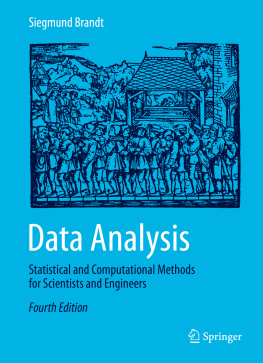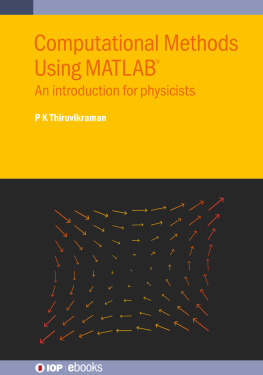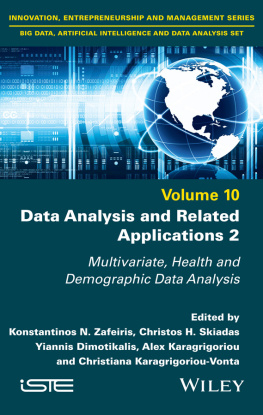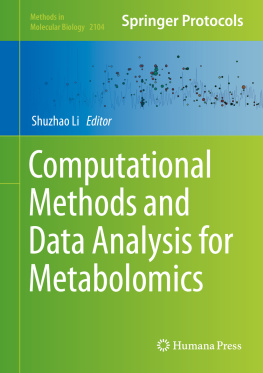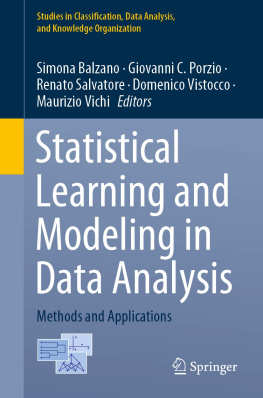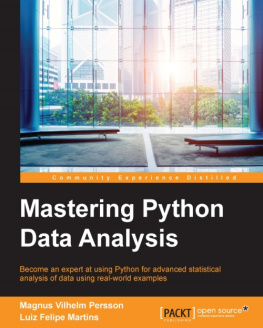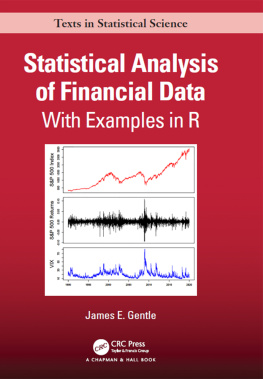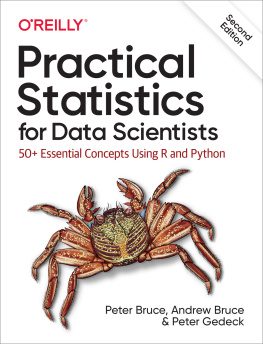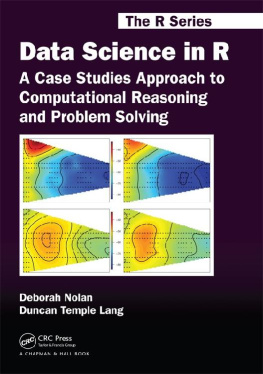Siegmund Brandt - Data Analysis: Statistical and Computational Methods for Scientists and Engineers
Here you can read online Siegmund Brandt - Data Analysis: Statistical and Computational Methods for Scientists and Engineers full text of the book (entire story) in english for free. Download pdf and epub, get meaning, cover and reviews about this ebook. year: 2014, publisher: Springer, genre: Science. Description of the work, (preface) as well as reviews are available. Best literature library LitArk.com created for fans of good reading and offers a wide selection of genres:
Romance novel
Science fiction
Adventure
Detective
Science
History
Home and family
Prose
Art
Politics
Computer
Non-fiction
Religion
Business
Children
Humor
Choose a favorite category and find really read worthwhile books. Enjoy immersion in the world of imagination, feel the emotions of the characters or learn something new for yourself, make an fascinating discovery.
- Book:Data Analysis: Statistical and Computational Methods for Scientists and Engineers
- Author:
- Publisher:Springer
- Genre:
- Year:2014
- Rating:5 / 5
- Favourites:Add to favourites
- Your mark:
- 100
- 1
- 2
- 3
- 4
- 5
Data Analysis: Statistical and Computational Methods for Scientists and Engineers: summary, description and annotation
We offer to read an annotation, description, summary or preface (depends on what the author of the book "Data Analysis: Statistical and Computational Methods for Scientists and Engineers" wrote himself). If you haven't found the necessary information about the book — write in the comments, we will try to find it.
Data Analysis: Statistical and Computational Methods for Scientists and Engineers — read online for free the complete book (whole text) full work
Below is the text of the book, divided by pages. System saving the place of the last page read, allows you to conveniently read the book "Data Analysis: Statistical and Computational Methods for Scientists and Engineers" online for free, without having to search again every time where you left off. Put a bookmark, and you can go to the page where you finished reading at any time.
Font size:
Interval:
Bookmark:
- A study is made of the weight of laboratory animals under the influence of various drugs. After the application of drug A to 25 animals, an average increase of 5 % is observed. Drug B , used on 10 animals, yields a 3 % increase. Is drug A more effective? The averages 5 and 3 % give practically no answer to this question, since the lower value may have been caused by a single animal that lost weight for some unrelated reason. One must therefore study the distribution of individual weights and their spread around the average value. Moreover, one has to decide whether the number of test animals used will enable one to differentiate with a certain accuracy between the effects of the two drugs.
- In experiments on crystal growth it is essential to maintain exactly the ratios of the different components. From a total of 500 crystals, a sample of 20 is selected and analyzed. What conclusions can be drawn about the composition of the remaining 480? This problem of sampling comes up, for example, in quality control, reliability tests of automatic measuring devices, and opinion polls.
- A certain experimental result has been obtained. It must be decided whether it is in contradiction with some predicted theoretical value or with previous experiments. The experiment is used for hypothesis testing .
- A general law is known to describe the dependence of measured variables, but parameters of this law must be obtained from experiment. In radioactive decay, for example, the number N of atoms that decay per second decreases exponentially with time:
 . One wishes to determine the decay constant and its measurement error by making maximal use of a series of measured values N 1( t 1), N 2( t 2), . One is concerned here with the problem of fitting a function containing unknown parameters to the data and the determination of the numerical values of the parameters and their errors.
. One wishes to determine the decay constant and its measurement error by making maximal use of a series of measured values N 1( t 1), N 2( t 2), . One is concerned here with the problem of fitting a function containing unknown parameters to the data and the determination of the numerical values of the parameters and their errors.
Font size:
Interval:
Bookmark:
Similar books «Data Analysis: Statistical and Computational Methods for Scientists and Engineers»
Look at similar books to Data Analysis: Statistical and Computational Methods for Scientists and Engineers. We have selected literature similar in name and meaning in the hope of providing readers with more options to find new, interesting, not yet read works.
Discussion, reviews of the book Data Analysis: Statistical and Computational Methods for Scientists and Engineers and just readers' own opinions. Leave your comments, write what you think about the work, its meaning or the main characters. Specify what exactly you liked and what you didn't like, and why you think so.


